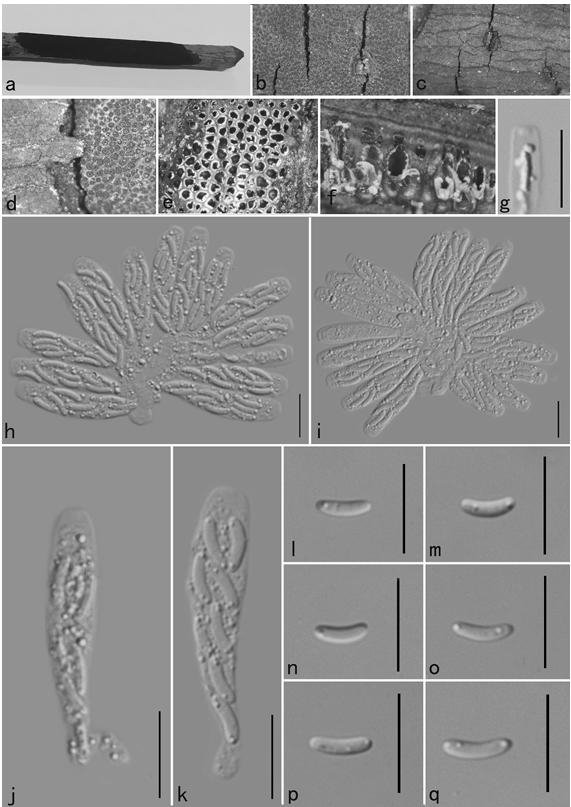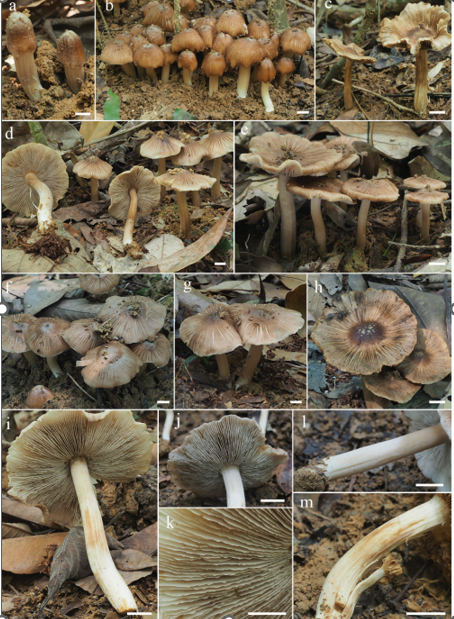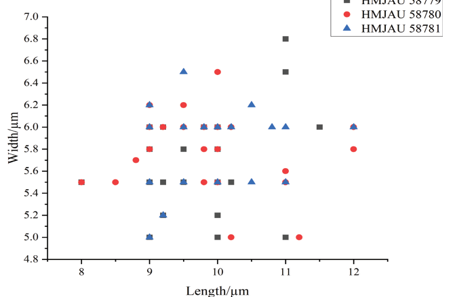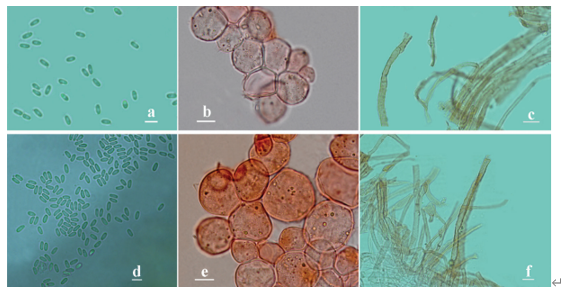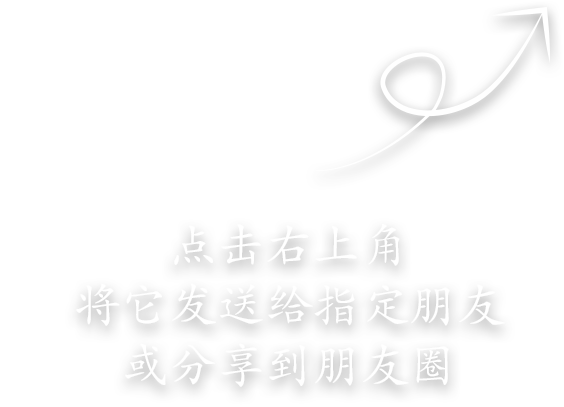Tomentella longiaculeifera H.S. Yuan & Y.C. Dai 2020
Index Fungorum number: IF555704; Facesoffungi number: FoF 05633
Holotype: CHINA, Liaoning Province, Qingyuan County, Experimental Station of Forest Ecology, on bark of fallen angiosperm trunk, 22 October 2015, Yuan 10744 (IFP 019303, holotype); Xifeng County, Binglashan National Forest Park, on rotten angiosperm branch, 2 August 2016, Yuan 11119 (IFP 019304), Yuan 11127 & 11133; on rotten angiosperm wood debris, 3 August 2016, Yuan 11149, 11168, 11175, 11191 & 11198.
Morphological description
Basidiocarps annual, resupinate, separable from the substrate, mucedinoid, without odour or taste when fresh, 0.4–0.6 mm thick, continuous. Hymenophoral surface smooth, brownish yellow to brownish orange (5C5–7) and concolorous with subiculum when dry. Sterile margin often indeterminate, farinaceous, concolorous with hymenophore. Rhizomorphs absent. Subicular hyphae monomitic; generative hyphae mostly clamped and rarely simple septate, thick-walled, occasionally branched, 4–6 μm diam, occasionally collapsed, with fine crystal encrustation, greyish yellow in KOH, cyanophilous, inamyloid. Subhymenial hyphae clamped, thick-walled, occasionally branched, 4–6 μm diam; hyphal cells slightly short and inflated, greyish yellow in KOH, cyanophilous, inamyloid. Cystidia absent. Basidia 20–60 μm long and 5–11 μm diam at apex, 5–8 μm at base, with a clamp at base, clavate, stalked, sinuous, without transverse septa, greyish yellow in KOH, yellowish brown in distilled water, 4-sterigmate; sterigmata 5–11 μm long and 1–3 μm diam at base. Basidiospores slightly thick-walled, (6.5–)6.9–10.1(–10.5) × (6–)6.5–9.7(–10) μm, L = 8.66 μm, W = 8.24 μm, Q = 1.03–1.08 (n = 60/2), globose in frontal view and subglobose in lateral view, echinulate to aculeate, golden yellow in KOH, pale yellow in distilled water, cyanophilous, inamyloid; echinuli usually isolated, up to 2.5 μm long.
Habitat: On bark of fallen angiosperm trunk.
Distribution: In China.
GenBank Accession: ITS: KY686238, KY686239; LSU: MK446391, MK446392.
Notes: Tomentella stuposa is similar to T. longiaculeifera by having continuous and mucedinoid basidiocarps, a smooth hymenophore, indeterminate sterile margins, the absence of rhizomorphs, clamped and simple septate hyphae and subglobose basidiospores of approximately the same size. However, T. stuposa is differentiated by hazel-coloured basidiocarps adherent to the substrate, and thin-walled subhymenial hyphae (Kõljalg 1996). T. globospora resembles T. longiaculeifera by having brown, continuous basidiocarps, the absence of rhizomorphs and cystidia, globose to subglobose basidiospores of approximately the same size and long echinuli. But, the basidiocarps of the former are crustose and adherent to the substrate, and the subhymenial hyphal cells are uniform.
Reference: Hai‑Sheng Yuan1,2· Xu Lu1,2 · Yu‑Cheng Dai3 ·
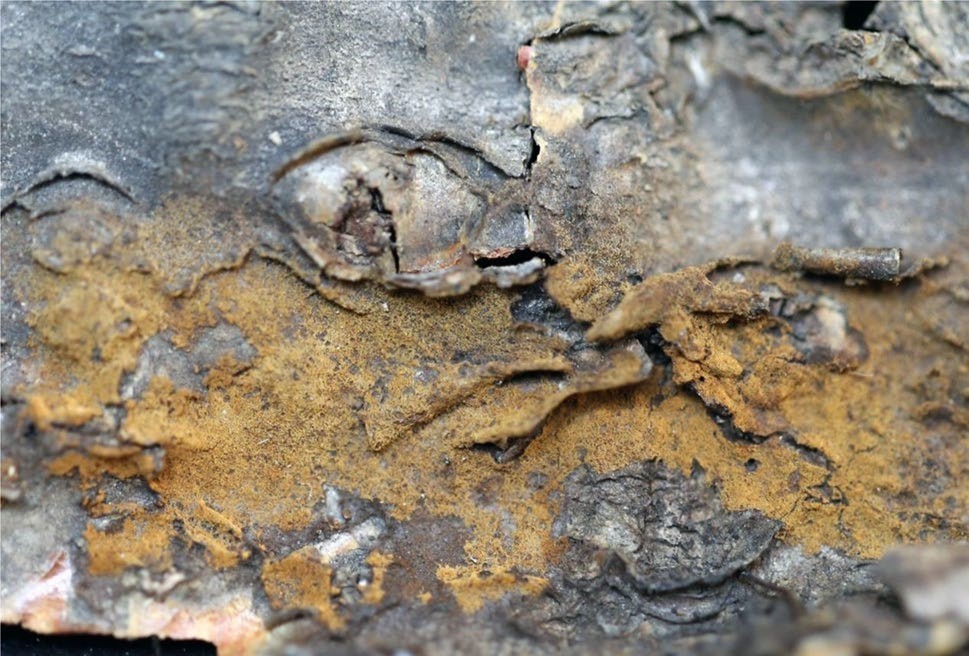
A basidiocarp of Tomentella longiaculeifera (IFP 019303, holotype)


